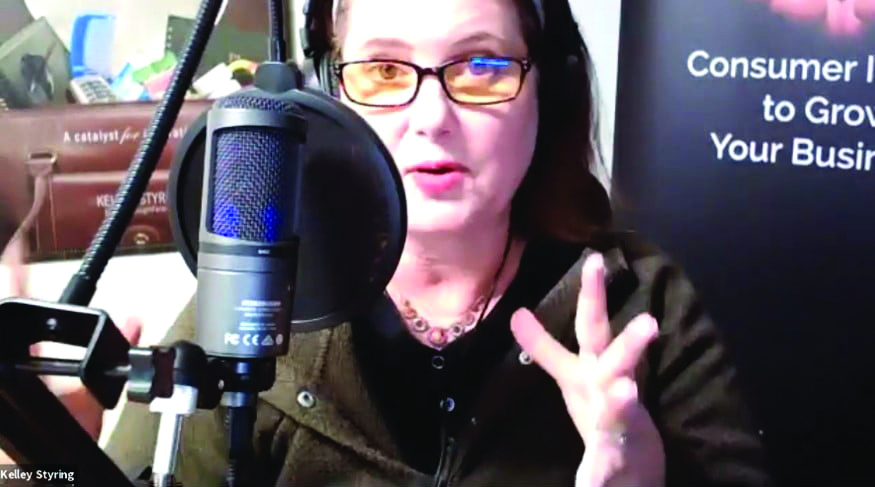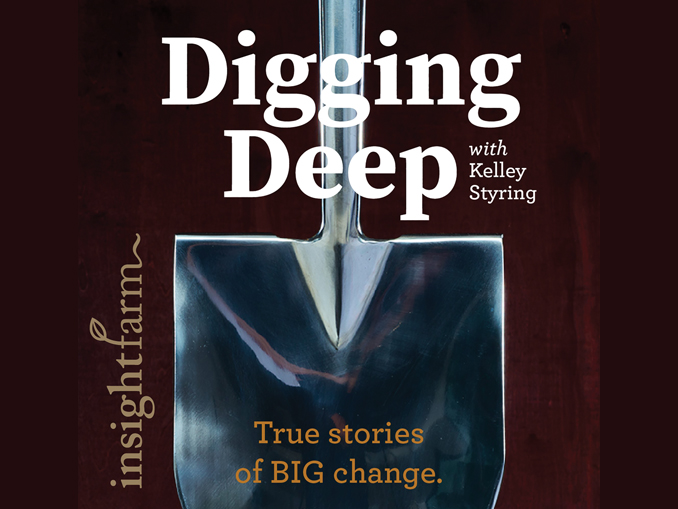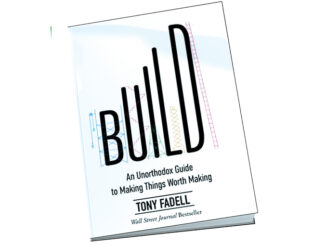
By Kelley Styring, Principal, InsightFarm Inc., Newberg, Oregon, kelley.styring@insightfarm.com
Trigger warning: This article includes stories of adult entertainment, assault, cancer, and debilitating injury. Reader discretion is advised.
The past few years have heaped changes upon us like never before. Sure, we’ve all experienced changes that come at a natural cadence. But consider the overlay of the pandemic’s dramatic changing of our work and home lives, climate chaos with high-impact natural disasters and untold future impacts, and general social divisiveness that impacts us on a daily basis—not to mention the ever-increasing speed of technological advancements, including generative artificial intelligence (AI). That’s a lot of change.
There is every reason to believe that significant changes and upheavals will continue. These stacked and significant ongoing shifts to our lives rock our sense of having a stable foundation and our ability to manage our day-to-day challenges.
It’s no surprise that anxiety and depression rates are up nationwide and worldwide for all age groups—especially the young.
How are we to cope and survive, much less grow and even thrive in this environment?
This question has been heavy on my mind since 2020 and has created a lens through which I see my practice of qualitative research.
For the last two years, I have been working on a podcast series called Digging Deep: True Stories of Big Change
(https://tinyurl.com/digdeepbigchange). Through that work, I have been able to meet and interview 13 fascinating people who have dealt with a broad range of big changes, including a Peace Corps volunteer, a carnival worker, a roller derby founder, a cancer survivor, a person working in adult entertainment, and a survivor of a notorious sex cult. Through moderated conversations, we explored how they navigated changes in their lives to not only survive but thrive.
It’s worth noting that their narratives are extreme and, in some cases, harrowing. Once the interviews were completed, I used empirical analysis to identify how they moved through their situations to gain strength from Big Change, and then I translated this into principles we can apply to daily living and everyday work-life situations. I identified five key principles I’m trying to apply each time I experience a Big Change.
Tapping Your Inner Strength
Several interview participants referred to tapping into their own inner strength when they got to the limits of dealing with external forces.
The inner strength they found was often something they didn’t realize they had before this moment of crisis.
Take Dustin Meza, known as The Paralysis Assassin, and his ongoing recovery from paralysis after falling from a coconut tree. After numerous surgeries, the medical establishment said they had done all that they could do.
He left rehab and moved to a remote cabin deep in the Hawaiian rainforest. He felt isolated and defeated, changed, and deeply unhappy. That is, until he realized he could reach a deep connection with the martial arts training from his youth and created his own plan to recover.
By digging deep, he was able to take his recovery far beyond what the medical establishment predicted. His inner strength set the course for Big Recovery. Over the course of a couple of years, he went from crawling to walking to bow hunting and spearfishing—all without the ability to feel anything below the knees.
Big Change was thrust upon him, and he is thriving today.
 Expect and Persist through Resistance
Expect and Persist through Resistance
Most of the interview participants experienced resistance to their ideas, desires, or needs. They came up against establishment hierarchies, societal expectations, and, in some cases, injury, assailants, and physical threats. Most of them moved through that resistance, and some took resistance as a sign that change was coming and necessary.
An adult entertainer who I interviewed told a story of losing her relationship with her mother in order to have a truer relationship with herself.
She explained the obstacles of her upbringing and society’s judgment when her pursuits in adult entertainment are pleasurable for her and supported by her husband and kids. Her conservative, religious upbringing created an inherent conflict with her mother, and this relationship was irreparably broken by her chosen profession. She had to accept that this relationship was gone to get to a place of self-acceptance and happiness. Her choices and her outlook buck the stereotypes of “down on their luck” women in this business.
She emerged from the turmoil of resistance as a healthy, well-adjusted woman with a unique and joyful occupation and outlook on life.
During this time, her spouse expressed his strong support for her journey of self-discovery, deepening their relationship, too.
Many interviewees from my podcast recalled strong external resistance that at first frustrated them. But the common thread among these interviewees was hearing and listening to an inner voice reminding them of the reward that outweighed the risk. This gave them the foresight and fortitude to move through resistance.
The important difference between those who are held back by perceived risk and those who aren’t is believing the benefits outweigh the risks. They also maintain the willingness to persist despite strong social tides pushing back against them.
Expecting resistance and pushing through obstacles is key.
Assume Survival or Success Is the Outcome
Several of the interviewees assumed survival or success was the only outcome.
The most striking example is an assault and kidnapping survivor who rallied herself by assuming she would successfully escape when the time was right.
Forced into a car and driven to a remote gravel quarry, she was subjected to cruel assault and terror for nearly 24 hours. During this ordeal, she cooperated as best she could because she had an inner belief that she would survive. She knew she would escape. While she was not sure of the details around how or when, she decided to pretend to drink alcohol with her assailant and then stayed awake, without food or water, until he finally fell asleep.
In her mind, she created and practiced an inner rallying cry, “1-2-3 Run!” and deployed it in her mind when it was time to run for her life from a remote location through the dead of night.
For many interview participants, success and survival were assumed from the beginning and had a lot to do with the ultimate outcome.
One Big Change Begets Another
Once someone has experienced a big change that they created—and then experienced the associated success—it’s not a huge leap to do it again. Even when the original change is thrust upon them, like cancer, paralysis, or kidnapping, the participants later reported a shift in mindset.
The experience of change itself and the resulting positive outcome helps the individual build not only a sense of confidence but also a mindset toward change. They’ve done it once. They can do it again.
This was particularly acute in the case of a childhood cancer survivor. Initially diagnosed at age 8, relapsing from remission at age 12, and finally cancer-free at age 23, she was cautious at first due to compromised immunity.
After a few years as a cancer-free adult, she felt she was “in a rush to do” everything because nothing could stop her after cancer. She made several very big changes as a young adult on a quick cadence. She got married, left her job for a more demanding profession, and moved across the country, away from her hometown for the first time. When that wasn’t working, she left that job and her husband, and moved back.
She told me that surviving cancer made her brave. Her emotional well-being, once she survived, was grounded in defining herself beyond cancer. She took calculated risks and was aware of a radical mindset shift from fear to freedom to take chances. Nothing in life would ever be as scary as cancer.
Even in the case where change occurs through tragedy, the survivor is stronger and more eager to make big changes proactively in planning their future. Having felt the success of one big change, they often try again by directing their energies in positive directions.
Gratitude and Generosity
Finally, each person I interviewed about Big Change felt gratitude toward those who supported them during and after their change process.
But, just as importantly, they felt gratitude and pride for their own inner strength, persistence through resistance, and ability to forge ahead into even more changes in their future lives.
The adult entertainer was proud of her growth as a person and the health of her family under the challenges of the path she chose. She was grateful to her spouse and her community of fellow entertainers and patrons.
The Paralysis Assassin was grateful for the lessons learned from paralysis and the support of family and friends. It’s striking because no one would choose paralysis as a learning path, yet in retrospect, he saw this as a pivotal moment of growth in his life.
They were also generous in telling their stories and sharing their beliefs about success not just with me but with others around them. Expressing gratitude and generosity of spirit were very common traits among these masters of Big Change.
Life Is Like Surfing in the Impact Zone
I have not had the pleasure to interview Bethany Hamilton, a professional surfer and writer who survived a shark attack, lost an arm, and returned to the sport—but having thrived after a big change, I imagine she’d reflect these principles, too.
These published words from Hamilton may be the best tip of all: “Life is a lot like surfing. When you get caught in the impact zone, you’ve got to just get back up. Because you never know what may be over the next wave.”
Assuming change is a constant and preparing for what’s next can help us navigate the changes undoubtedly on their way in our shared and uncertain future.




